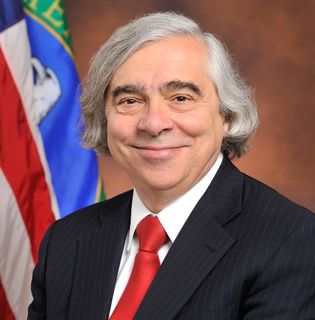To illustrate these conflicts in energy transportation, Professor Rossi used two transportation examples that differ in geography, product transported, governing body historically responsible for regulation, and often in public perception. Despite these differences, both means of transportation face legal hurdles that require consideration of federalism principles. The examples include the Constitution Pipeline, a natural gas pipeline segment connecting Pennsylvania to New York, and the Plains & Eastern Clean Line Project, a direct current transmission line transporting wind energy from Oklahoma, Kansas, and Texas to Tennessee, Arkansas, and the rest of the south and southeast.
After presenting these conflicts, Professor Rossi engaged the audience in discussions about the need for future collaboration between the federal and state authorities and the impact of the new administration on these battles.
I read it. It seems to me that he concluded that the U.S. DOE's Section 1222 evaluation process for Clean Line's Plains & Eastern Clean Line project provided an opportunity for states to consult on the project, and that the DOE carefully considered the comments and concluded that the benefits to the states outweighed the detriments caused by the projects.
Hahahahahahaaaaa! I think that's ridiculous!
DOE's Section 1222 consideration process was a tone-deaf, double time march to project approval. Comments from states and other stakeholders were batted away in their entirety in DOE's analysis. DOE accepted and supported Clean Line's contentions completely, did no independent analysis of statutory criteria, used outdated studies cited by Clean Line, and made specious conclusions that all comments opposing the project were wrong, and that everything in Clean Line's application was factual and persuasive. DOE's Section 1222 process for Clean Line did not consult with affected states. It merely allowed them to comment, and then disparaged every point made with spurious excuses. DOE's failure to consult with states was slapped down by the 9th Circuit in 2011 in California Wilderness Coalition v. US Dep't of Energy, where the court found that the opportunity to comment was not the same as consultation. To hypothesize that DOE's allowance for states to comment on its Sec. 1222 process equates to "consultation" makes a serious legal error.
It is not true that DOE's Section 1222 process created a "bulletproof" method for state/federal collaboration. In fact, a lawsuit against the DOE was filed within months of its agreement to participate in the project. The lawsuit contains a myriad of claims, such as failure to provide due process to affected stakeholders, failure to meet Section 1222's statutory criteria, failure to recognize Sec. 1222's preservation of state siting authority, non-statutory criteria added to DOE's RFP, and, yes, questioning DOE's authority to use eminent domain to condemn property for a Sec. 1222 project, just for starters.
To hold DOE's Sec. 1222 process up as a shining example of "consultation" with states is ludicrous! DOE concluded that "benefits" of the Clean Line project outweighed the "unavoidable impacts" in states crossed by the project and told states that the project was beneficial to them. It mattered little that the states did not agree the project was beneficial. None of the data used was open to cross-examination in a fair and impartial hearing. DOE gave itself great deference to make a finding in an opaque manner, without true state consultation. DOE used Clean Line's sponsored studies to conclude economic and employment benefits to each state, as well as Clean Line's estimates of tax benefit. Then it considered "payments to landowners" for easements to be a "benefit." Payments for easements are compensation for something taken from a landowner. It is not a financial windfall, or a "benefit." It is purely compensation purported to make a landowner whole. It is not a "benefit." DOE then compared its concocted "benefit" to its own rendition of "unavoidable impacts" that had not been "mitigated," to inform the states that they would receive "benefits." Mitigation, again, is a compensatory action. It presumes that the taking of something can be made whole by the substitution of something else of value. Say a company wanted to turn the Grand Canyon into the world's biggest swimming pool... it could "mitigate" the impact of the loss of the Grand Canyon by creating a new park in another canyon and using that to replace the Grand Canyon. That's the definition of "mitigating" impacts. It presumes that everything is for sale at the right price. Mitigation efforts rarely, if ever, actually make up for what was taken. Mitigation is a poor attempt to compensate for a loss. Mitigation also presumes a project must proceed, and it's only about how much it costs. The DOE approached the Sec. 1222 process with a pre-disposition toward approval. Instead of approaching it as a matter of whether or not to build, it approached it as a fait accompli that it would be built with the DOE-approved compensatory measures in place. This is the same way FERC currently approaches gas pipeline projects.
Will pipeline opponents be fooled into believing they could have more influence on projects by doing away with the current limited veto power of the states and replacing it with a jacked-up "consultation" process that presupposes that a project will be approved at the right price?
FYI, pipeline opponents, DOE's Section 1222 approval process makes FERC's current gas pipeline approval process look like the epitome of democracy. Don't fall for it!
I'm not sure what Jim Rossi's purpose is with this upcoming research paper, but I think it's much too facile to convince pipeline opponents to toss their last weapon into the scrap heap. Rossi and his co-author have written numerous papers championing federal siting and permitting authority for electric transmission in the past. So far, their arguments have been unconvincing to Congress. Any serious effort to usurp state authority to site and permit electric transmission is going to be met with a firestorm of opposition.
As someone who both observed and participated in DOE's Section 1222 process, I think this research paper treads dangerously outside the realm of reality.

 RSS Feed
RSS Feed